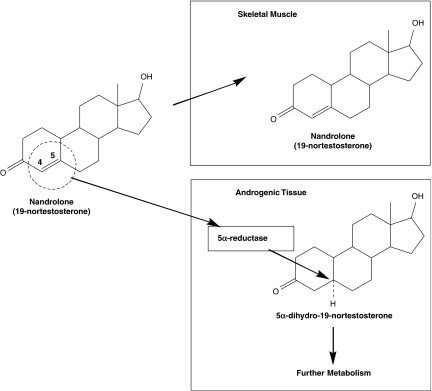Figure 6.
In androgenic tissues, nandrolone (19-nortestosterone) is readily converted by the enzyme 5α-reductase into 5α-dihydro-19-nortestosterone, i.e., the double bond between C4 and C5 is reduced. This metabolite binds with weaker affinity to the androgen receptor compared with the parent steroid. Further metabolism can occur because of the high activity of the enzyme 3α-hydroxysteroid-dehydrogenase (which reduces the 3-oxo group) in androgenic tissue. In skeletal muscle, 5α-reductase activity is negligible and, therefore, the parent steroid itself binds with strong affinity to the androgen receptor. It follows that there is a favourable disassociation of the myotrophic effects from the androgenic effects of nandrolone and also that there is a greater myotrophic-to-androgenic ratio when compared with testosterone.

